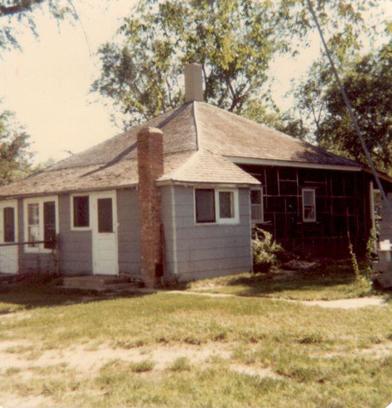
Of course, it didn’t seem tiny to me at age five.
An ornamental gate opened off the driveway into the front yard, set in a loosely woven wire fence which determined the demarcation between the house yard and the farmyard.
Two enclosed porches faced east, separated by a few feet and a window. A concrete stoop rested outside each door.
That first entry, I stepped through the right back porch door. The first thing on the other side of the door was the hand pump, too hard for me to use, where water flowed icy cold from the windmill out next to the corral and pumped into a basin or tub.
The next thing I remember is the etched and beveled glass picture window in the dining room which overlooked a grassy yard that faced the road, lined with spirea bushes.
The fence wrapped around the light pole and included another gate which faced north, where we exited to chore. For some reason, the fence on the left side of the gate was six-feet high and encased a hedge of double lilacs that perfumed the air in spring.
To the right of the house, on that same north side, a profusion of beautiful flowers covered the mounded top of “the cave,” a.k.a. the storm shelter or root cellar. A worn path between the house and cave led to the outhouse beyond the back fence.
The four-room house, plus the porches, sat on a quarter section of land. The 160 acres I called home was in Antelope County, five miles east and three north of Neligh, Nebraska. The land consisted of highly erodible soil, from sand to clay and most anything in between except black loam. Dad planted dryland crops such as corn, alfalfa, and grains for silage to feed the cows.

 RSS Feed
RSS Feed
